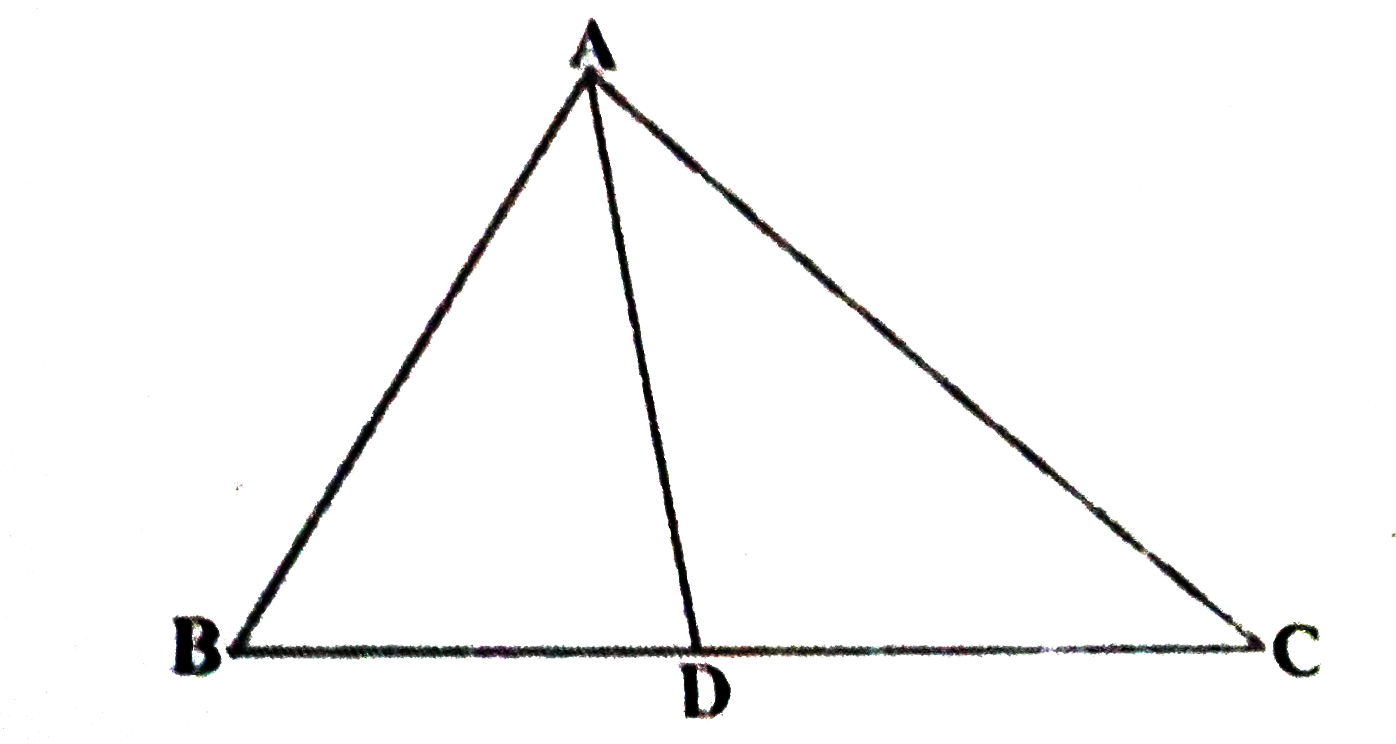D is a point on the circumcircle of ABC in which AB=AC such that B and D are on the opposite side of line AC. If CD is produced to a point E such that CE=BD, prove that AD=AE
Given that D is a point on the circumcircle triangle ABC in which AB=AC such that B and D are on the opposite side of the line AC Also if CD is produced to a point E such that CE=BD then. we have to find which is equal to AD.We join A and E
We know that angles in same segment of circle are equal.
SO∠ABD=∠ACD
because the angle is in same segment AD
Now given that AB=ACand CE=BD(congruent)
Therefore
△ABD≅△AEC by SAS Rule.
SAS side, stands for "side, angle, side"are equal to For any two triangles if two sides and the included angle af one triangle the corresponding sides and angle af anothers triangle, then two triangles are.. congruent
Therefore AD=AE
Topper's Solved these Questions
Similar Questions
A point D is taken on the side BC of a ABC such that BD=2dC. Prove that ar(ABD)=2ar(ADC).
View SolutionIn Figure, it is given that AE=AD and BD=CE. Prove that AEB≅ADC
 View Solution
View SolutionABC is a triangle. D is a point on AB such that D=14AB and E is a point on AC such that AE=14AC. Prove that DE=14BC
View SolutionABC is a triangle. D is a point on AB such that AD=14AB and E is a point on AC such that AE=14AC. Prove that DE=14BC.
View SolutionD and E are, respectively, the points on equal sides AB and AC of an isosceles triangle ABC such that B, C, E, and D are concyclic as shown in Figure. If O is the point of intersection of CD and BE, prove that AO is the bisector of line segment DE
View SolutionIn a ABC,EandF are the mid-points of ACandAB respectively. The altitude AP to BC intersects FE at Q Prove that AQ=QP
View SolutionIn figure D is a point on side BC of a ΔABCsuch that BDCD=ABAC. Prove that AD is the bisector of ∠BAC.
 View Solution
View SolutionIn Figure, it is given that AB=BC and AD=EC . Prove that ABE≅CBD
 View Solution
View SolutionA point D is taken on the side BC of a ABC such that BD=2DC. Prove that ar ( ABD)= 2 ar ( ADC)
View SolutionAny point D is taken in the base BC of a triangle ABC and AD is produced to E, making DE equal to AD. Show that ar (BCE)=ar(ABC)
View Solution

